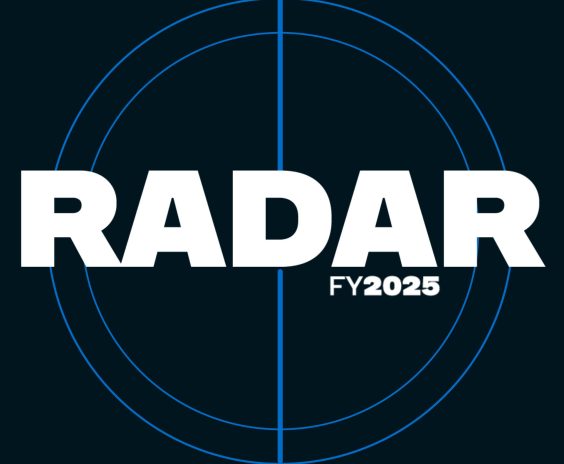RADAR FY2024 – Strongest result in more than 10 years, but insurers in regulator sights


How is the general insurance industry tracking? Find out in Taylor Fry’s latest annual report, as we share our insights on all the major happenings, trends and impacts on the market in our class-by-class analysis.
For the second year in a row, the industry posted a healthy profit – $3.9 billion after tax – over the nine months* to 30 June 2024. But the solid result comes alongside a sharp focus on industry integrity, with customers and climate the big issues.
Drawing on data from the Australian Prudential Regulatory Authority (APRA), we reveal the healthy industry performance was driven by three main influences – premium increases broadly matching claims costs, catastrophic losses below expectations and steady investment returns of $3.4 billion, up $0.8 billion on last year.

Here’s a snapshot of key themes we explore in RADAR FY2024 …
Focus on transparency, accountability and customer treatment
Actuary and Principal Scott Duncan explores the positive figures against a backdrop of heightened ethical focus. “Some of the key themes driving future industry performance will be transparency, accountability and the fair treatment of all customers,” he says. “The most recent example is the guidance from the Parliamentary inquiry into insurers’ responses to 2022 major floods claims, with its three Ps – policyholder treatment, pooling mechanisms and prioritising preparation.”
Flood inquiry affects whole industry
“Many of the recommendations arising from the inquiry are relevant outside home insurance and the industry is actively considering what this means for other products and processes,” he adds. “As part of the increased focus on customers, senior management and Boards are increasingly demanding information on customer outcomes to complement the usual metrics on financial performance.”
Climate and the race for new technology
Looking ahead, the rapid uptake of AI in business and its climate implications illustrate that the risks insurers face and manage are evolving quickly. “The rise in AI has led to a greater demand for energy, which must be considered in the world’s path to net zero greenhouse gas emissions,” Scott says.
“Insurers investing heavily in AI for business transformation goals will need to consider how this fits in with their net-zero targets and transition planning. They can’t afford not to pay close attention to the shifting landscape, their role within it and the impact on the cover they offer.”

Customers, AI and climate are among the big themes this year, with regulators focused on integrity.
Addressing physical risks only part of the story
He adds that for the industry, building understanding involves recognition that physical risks arising from climate change are only part of the story, that minimising the causes – transitioning to a low carbon economy – is critical to a sustainable insurance future.
“The transition to net zero is undoubtedly changing the risks insurers face and manage,” Scott says. “For example, lithium-ion battery fires and liability exposure from withdrawing too slowly from carbon-intensive industries are top of mind for insurers. But plenty of opportunities exist for insurers within this evolving landscape to innovate and drive the move to a more environmentally and socially responsible society.”
Underinsurance a stark reality
Diving into the classes, the RADAR report shows consumers appear to be turning away from home insurance as cost-of-living pressures bite, with the number of risks insured retreating by around 3% compared with last year. “This is the largest year-on-year drop in insured risks since at least 2013, and follows a 19% year-on-year increase in average written premium,” Scott says. “The growing political focus means insurers must engage more actively with regulators. By providing insights into the practicalities of climate risk pricing, insurers can help shape future regulations, balancing affordability with risk sensitivity.”
Future profitability, he says, will depend on “the level of catastrophic activity and whether recent price increases are sufficient to cover the increase in claims costs, particularly as labour shortages for skilled workers continue to increase repair costs”.
As regulatory changes and media attention on the industry grow, maintaining a positive reputation will be crucial, Scott adds. “Demonstrating a commitment to customer value and community protection, for example through resilience initiatives, will be vital for preserving trust and loyalty.”
The transition to net zero is undoubtedly changing the risks insurers face and manage … But plenty of opportunities exist for insurers within this evolving landscape to innovate and drive the move to a more environmentally and socially responsible society.
Technology changing the nature of car repairs
Turning to Domestic Motor, he says the technology embedded in new vehicles and the shift to electric vehicles are changing the nature of repairs for the industry. “While the cost of spare parts and accessories may have peaked, repair costs are on the rise due to labour shortages and increases in repair times.”
LMI reaps rewards
Reserve releases are another area of interest in RADAR FY2024, which reveals these have had a large impact on 2024 industry performance, with several classes benefitting from a reassessment of prior year claims costs. “Lenders mortgage insurance is a standout class, as the reserves built early in the pandemic continue to be released,” Scott says. “LMI insurers haven’t seen the increase in claims they were expecting due to property price increases, low unemployment and government support during COVID-19.”

The rapid uptake of AI and its climate implications illustrate the risks insurers face are evolving.
Silent AI follows silent cyber
Reflecting on the lessons learned from silent cyber, the Taylor Fry report observes insurers are “getting on the front foot” to clarify coverage and build out underwriting requirements to include questions on the use of AI. “The insurance industry is no stranger to AI and is well versed in the opportunities offered by AI and the potential risks,” Scott says. “The focus now is on understanding the opportunities for new products and how AI changes the risk landscape for existing products.”
*The latest APRA data excludes the September 2023 quarter due to changes in reporting standards.
Other articles by
Scott Duncan
Other articles by Scott Duncan
More articles

How inflation is changing the insurer landscape
We explore the drivers and impacts of inflation on general insurance, and what insurers can do to thrive amid the pressures ahead
Read Article

A practical business guide to the new design and distribution obligations (DDO)
ASIC’s design and distribution obligations offer firms a chance to realise greater business value and connection to their customers
Read Article
Related articles
Related articles
More articles

How inflation is changing the insurer landscape
We explore the drivers and impacts of inflation on general insurance, and what insurers can do to thrive amid the pressures ahead
Read Article

Win-Li Toh awarded Insurance Leader of the Year 2023
The Taylor Fry Principal was recognised for the “shining leadership”, collaboration and goodwill she has brought to the industry and beyond
Read Article






